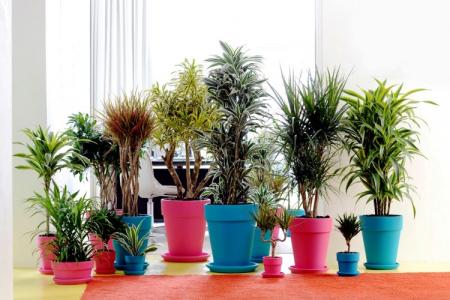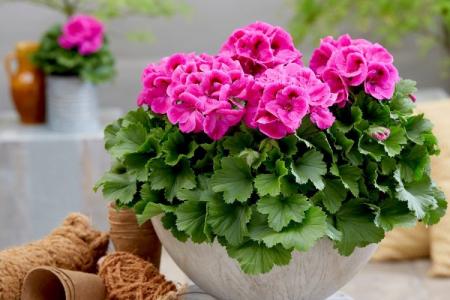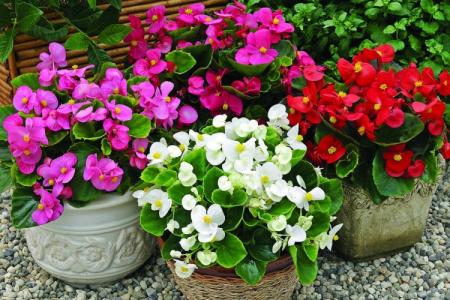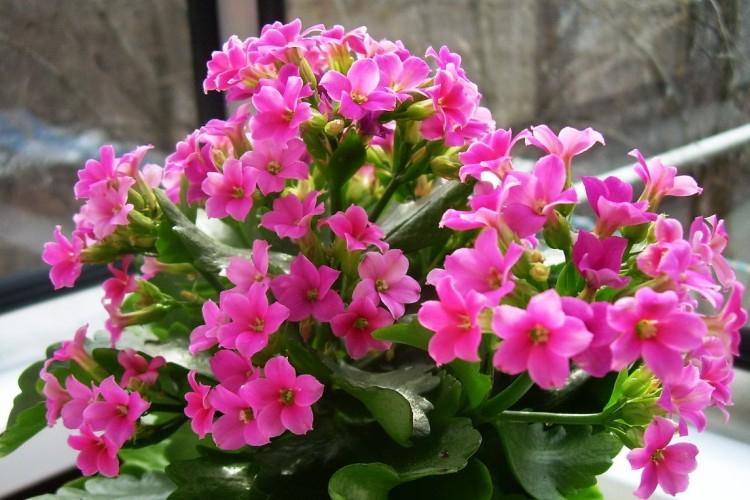
Kalanchoe is a beautiful shrub with fleshy and jagged leaves, some of its subspecies often bloom profusely. Considering that healing properties are attributed to all varieties of this plant, it becomes clear why almost every housewife has a Kalanchoe growing on the windowsill for years. But even such an unpretentious indoor flower requires proper care. Let's tell you more!
How to transplant Kalanchoe
Kalanchoe grows rather quickly, for this reason it is recommended to replant it annually in the spring. If a bush has been growing on your window for many years, and you inherited it from your relatives, then it is better not to disturb such an "old man" in vain with frequent transplants.
With the arrival of the warm season, if the roots do not begin to appear in the drainage hole, just add fresh nutrient soil and fields to the pot. Transplant the younger plants every year by transferring them into a flowerpot, which is a couple of centimeters wider and higher in width and height than the previous one. It is important to remember that it is impossible to transplant a blooming Kalanchoe, be sure to wait until the moment of flowering.
At the bottom of the container, an embankment of crushed brick or expanded clay, without a good drainage layer, the roots of the Kalanchoe will rot. Add some succulent soil. Tap lightly on the sides of the pot to settle the soil. Carefully, so as not to damage the fragile roots and stems, transfer the flower along with the earthen lump to a new flowerpot. Top up the container with earth and put it in a slightly shaded place for several days. At this time, it is not necessary to water the Kalanchoe. If the air in the room is very dry, you can spray the area around the flower with a spray bottle.

How to water Kalanchoe
Kalanchoe is one of those plants that are more likely to survive drought than over-watering. Try to water the flower when the earthy ball is completely dry. The intervals between watering in winter should be one and a half to two weeks. In summer, their frequency increases to once every 5-7 days.
Apply quite a lot of water under the roots of the plant in order to moisten all the soil in the pot well. Never leave excess moisture in the pan, pour water immediately and wipe dry. Otherwise, the roots of the flower from constant stay in moist soil will begin to suffer from all kinds of rot and other fungal or bacterial diseases.

Lighting requirements
All types of Kalanchoe love a lot of bright light and are not particularly afraid of direct sunlight. If you put a flower on the sill of the south window in the summer, then the leaves will acquire a reddish tint, which some growers even like. But it is better to choose an eastern or western window for the plant, there it will receive sufficient illumination and will not change the color of the leaf plates. It's up to you, of course!
By the way, Kalanchoe will grow in the shade, but at the same time it will lose its decorative effect, the stems will begin to stretch and become lighter, and the leaves will become smaller. In addition, the plant will stop blooming without sunlight. In too shaded houses and apartments, the phytolamp will help solve the problem of lack of natural lighting. Turn it on daily for 12 hours, then your Kalanchoe will feel great.

Temperature regime
Kalanchoe, like all other succulents, loves warmth, but can easily endure extreme temperature changes. The ideal temperature regime for its content is +25 degrees. In summer, the plant will feel good at +30, but do not allow the earthen coma to dry out too much. In winter, the flower will easily survive the cold up to +8 degrees, but for this period, reduce watering to a minimum, since excess moisture will destroy the Kalanchoe.
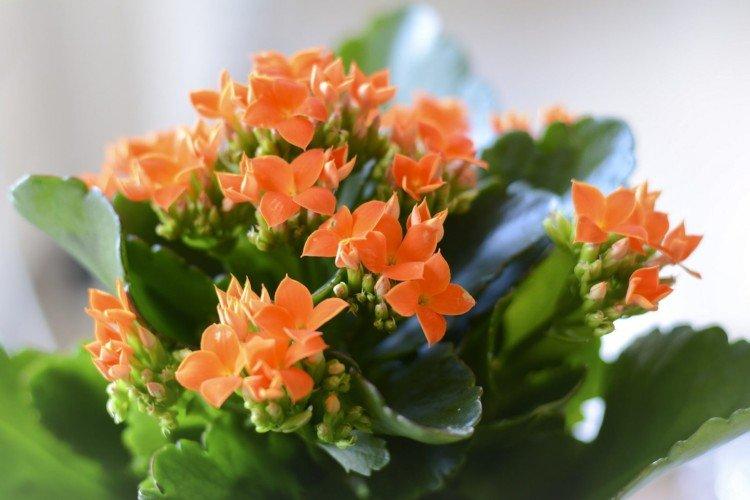
Fertilizers and fertilizing Kalanchoe
It is worth noting that Kalanchoe can grow well and delight with flowering on depleted soils. The flower is very undemanding for feeding, for this reason it is started in their homes by those who have no time to engage in plant growing.
If you want to get a particularly lush bush and gorgeous peduncles on it, then during the period of bud formation and during flowering, apply a complex fertilizer for flowering plants once every 3-4 weeks.
Dilute the product according to the instructions in the right amount of water and just fields a bush when the top layer of soil in the flowerpot dries out a couple of centimeters. In no case do not feed the Kalanchoe during the dormant period, when there are no flowers on it, otherwise you risk seriously harming it.

Crown formation
Young Kalanchoe bushes look luxurious in beautiful interior flowerpots, but over time they will stretch and lose their decorative effect. To prevent this, try to regularly prune unnecessary stems, forming a beautiful bush.
As soon as the plant has faded, cut the stems and shorten the branches on which they were located. After a while, lateral processes will begin to appear at the site of the cuts, wait until they reach a length of several centimeters and carefully cut off the tops to start the process of additional branching.
This will give the crown of the Kalanchoe a lush and slightly squat shape. If the pruning procedure is carried out correctly, then closer to autumn, young shoots will give flower stalks, due to which the bush will literally be covered with bright and large flowers.
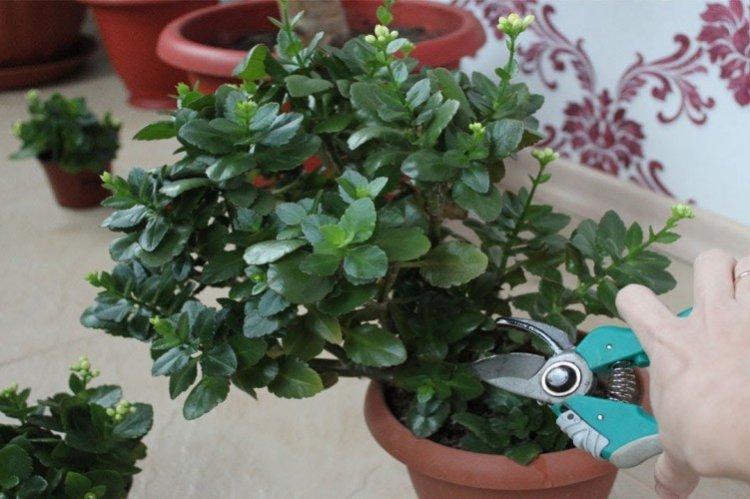
Breeding methods of Kalanchoe
If you have Kalanchoe bryophyllum growing on your windowsill, then you won't have to worry about its reproduction, since tiny "children" will regularly appear on its leaves. They are, albeit very small, but already fully formed plants with leaves and roots. The shoots eventually fall into the pot with the mother flower, as well as into neighboring flowerpots and take root there. Just transplant such a "baby" into a separate container and take care of him as usual.
All other types of Kalanchoe are easiest to propagate by cutting off the top and rooting it in a glass of water. Thin white roots will appear in a week and a half. Carefully transplant the scion into a succulent pot and water it a little when the top layer dries. If everything is done correctly, then very soon flowering will come, and the plant itself will turn into a beautiful bush with dense foliage.
Another way of reproduction of Kalanchoe is leaf. Cut off a few leaves, immediately submerge them in half in a moistened substrate. Water regularly by spraying the soil with a spray bottle. Very soon you will see that tiny bushes make their way to the surface at the base of the leaves.
It is also possible to propagate Kalanchoe by seeds, but this method is much more complicated than those described above. Yes, and its effectiveness is very doubtful, since new young plants that are completely different from their mother's grow from seeds.

Kalanchoe diseases and their treatment
Kalanchoe rarely suffers from pests and various kinds of diseases. Only with prolonged improper care can the plant show signs of disease. For example, with too much watering, root rot begins to develop, from which the leaves soften and fall off. Transplant the flower, removing damaged roots, and adjust the watering regime.
Kalanchoe stretches, and the tips of its leaves dry up if it lacks moisture and light. Move the pot to a lighter spot and water more often. When the bush moves away a little, add top dressing.
To protect the flower from all sorts of aphids, scale insects, ticks, once a month, wipe the leaves with soapy water and rinse with warm water. If parasitic insects are found, then use special insecticides.


